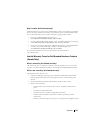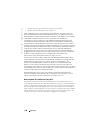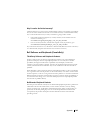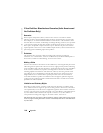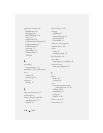
Appendix 165
Glossary
802.11 (WI-FI)—A wireless technology standard for mid-range networking
devices that allows for enabled devices to automatically recognize each other.
B
LUETOOTH™—A wireless technology standard for short-range (10 m [30 ft])
networking devices that allows for enabled devices to automatically recognize each
other.
C
OMPACTFLASH CARD — A removable card that is used to expand the
capabilities of a device. Common types of CompactFlash cards include memory
and wireless cards.
CRADLE — A device that allows your handheld device to synchronize with a
computer, recharge its battery, and run on AC power.
DHCP — dynamic host configuration protocol — A communication protocol
that allows network administrators to manage and automate the assignment of
Internet Protocol addresses to computers in a network.
IMAP — Internet message access protocol — A standard client/server protocol
that allows you to access your e-mail from a server. Using IMAP, you can store and
browse your e-mail on the server.
I
NFRARED SENSOR — A port that allows you to transfer data between the
computer and infrared-compatible devices without using a cable connection.
ISP — Internet service provider — A company that allows you to access its host
server to connect directly to the Internet, send and receive e-mail, and access
websites. The ISP typically provides you with a software package, username, and
access phone numbers for a fee.
LAN — local area network — A computer network covering a small area. A LAN
usually is confined to a building or a few nearby buildings. A LAN can be
connected to another LAN over any distance via telephone lines and radio waves
to form a wide area network (WAN).
PIM — personal information manager — A program that stores and organizes
your personal information, such as Calendar, Contacts, Messaging, and Tasks.
POP3 — post office protocol 3 — A standard client/server protocol that allows
you to access your e-mail from a server. Using POP3, you must download your
e-mail to your local system to view and browse your messages.
RAM — random-access memory — The primary temporary storage area for
program instructions and data. Any information stored in RAM is lost when you
perform a reset.



